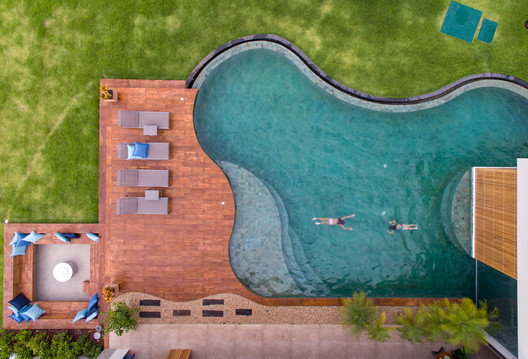
Few architectural typologies have the power to invoke a sense of being dual-natured quite as the modernist swimming pool can. The design of pools themselves implies that there are moments of activity both above and below the water. Above, and in the more obvious and visible sense, pools act as a space for leisure and athletic training. But underneath the surface, swimming pools have a long-standing history of acting as symbols of surveillance, death, and social conditions associated with an economic class.

The evocative smell and lingering tackiness of chlorine paired with the continuous movement of water as it reflects and provides transparency are hyper-specific characteristics of swimming pools. When combined with the social experience of semi-nudity, the ability to find individual freedom in a public space is revealed. Swimming pools increased in popularity in the United States as the middle class expanded and the commercialization and references to pop culture turned them into places of mass leisure. As segregation ended in the 1960s, people of all races were allowed to enter public pools, creating a new social condition where collective activities occurred. Over time, individualism prevailed, homeowners began to want their own place of aquatic escapism to use as they pleased, and the concept of the private backyard pool was popularized.

Europe also saw an increase in the desire for pools as a balance of public and private spaces. One of the most well-known examples of modern swimming pools, although unbuilt, was Adolf Loos’ design for the Josephine Baker House. In what can only be speculated as Loos’ obsession with Baker’s celebrity and iconicity as a modern Black woman in Europe, the home was designed to make her the primary object and guests to be the viewing subjects. Contained within the infamous black and white striped walls of the home, the swimming pool represented ideas about performance, clandestine observation, and the objectification of the male gaze. The large glass windows that would allow visitors to watch Baker swim, as Kurt Under, a colleague of Loos’ claimed, created the perfect setting for a voyeuristic “underwater revue”.

Swimming pools also appear as a large subject of art, particularly in the well-known David Hockney painting, A Bigger Splash (1967). The painting conveys the motion of water that breaks the blue placidity as a trace of human interaction after leaping from the diving board, and the backdrop of a traditional and modern Southern California home represented as simple and colorful planes. Now, often claimed as a renowned symbol for the desired life of a Los Angeleno, A Bigger Splash has helped to further ingrain the aspiration of owning a backyard with a private watering hole- making this region almost synonymous with swimming pools.
A swimming pool, especially a well-designed one, is now a suburban status symbol filled with the same ideals as the pools of the elite that provide a sense of freedom. While a public pool comes with few restrictions and limitations on who can enter, a private pool requires a sense of exclusivity and is to be used by invitation only. They have the power to transform a home into a resort, and serve as a place where people could escape from the daily grind, and recreate their alter egos.
It’s hard to name something so commonplace and simple of an idea as a swimming pool that is held in such highly commoditized regard as it relates to economic success. Pools, whether public or private, large or small, above or in-ground, are filled with meaning- all it takes is a peek below the surface.
Editor's Note: This article was originally published on July 24, 2020.




